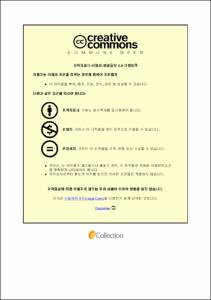Ulsan Univ. Repository
Thesis
General Graduate School
Convergence Technology Engineering of Heavy Industry
1. Theses(Master)
선급용 강재의 용접 열영향부 미세조직과 저온균열에 미치는 탄소당량과 예열온도의 영향
- Abstract
- Cold cracking in welds occurs due to the combined variables that are residual stress, diffusive hydrogen and microstructure. And the preheating processes are applied in the field to control cold cracking. However, excessive preheating causes a problem of productivity deterioration, so it is important to determine the minimum preheating temperature avoiding the occurrence of cold cracking.
The study and specification related to the study of the preheating temperature have been proposed in consideration of the diffusible hydrogen content, the thickness of the base material, the chemical composition and the heat input. Especially, Ceq, CEN, and Pcm were suggested as factors to consider the chemical composition of steels for considering microstructure.
However, there is a difference in the preheating temperature due to different weight value of the alloying elements of each index, and there is insufficient approach from the microstructural point of view. In addition Ceq, Pcm, CEN, and CET Indidices showed only a certain tendency of the results of Y-groove test, and it was difficult to be used as a predictable index.
In this study, I investigated the changes of the microstructure of the heat affected part according to the preheating temperature and carbon equivalent, and evaluated the susceptibility of the steel to the appropriate preheating temperature. For this purpose, four kinds of steels having different contents of carbon equivalent and carbon content were prepared and the Y-groove test was conducted to compare cold cracking susceptibility. And FCAW technique was used. The heat input was fixed at 8kJ / cm and the preheating temperature was changed to 20, 50, 80, 110, 140 ℃.
As the carbon equivalent decreased or the preheating temperature increased, the fraction of martensite decreased and the fraction of bainite and acicular ferrite increased, resulting in decreased susceptibility of cold cracking. In addition, the increase of the carbon content caused the increase of the hardness of the martensite, which resulted in the increase of the cold cracking susceptibility in the same fraction of the martensite. Through this, we tried to consideration of the martensite fraction and hardness at the same time for evaluating cold cracking susceptibility. As a result, it was confirmed that there was a high relation of martensite fraction and hardness on the occurrence of cold cracking. It is considered that Ceq, C, which is a factor affecting the martensite fraction and hardness, can be reasonably estimated by considering the above two parameters. In this study, the proper preheating temperature estimation method is considering Ceq, C which affect the martensite fraction and hardness was investigated.|선박의 대형화에 따라 선박에 가해지는 하중의 증가로 인해 선박에 사용되는 강재의 기계적 물성 향상이 요구된다. 이를 만족시키기 위해서 과거에는 합금원소를 첨가하는 방법으로 강재를 제조하였다. 하지만 이러한 방식의 합금원소 함량의 증가는 탄소당량(Carbon equivalent, Ceq)을 증가시키고, 용접성을 떨어뜨리고 용접 시 추가적인 예열 및 후열공정을 필요로 한다. 이러한 합금원소에 의한 단점을 보완하기 위해 개발된 강재가 바로 TMCP(Thermo mechanical controlled Process)공정을 이용한 HSLA(High Strength Low Alloy) 강재이다. 이러한 TMCP강재는 기존의 강재와 합금원소의 함량이 줄어든 것이 특징인데, 이러한 합금원소 함량의 감소에 의해 저온 균열 감수성이 줄어들었다. 하지만 이에 따른 강재의 저온균열 감수성의 평가에 대한 연구가 미비하다. 이와 함께 기존의 예열온도 판단에 대한 연구가 진행되었으나 이러한 연구들에서 제시하는 저온균열 감수성을 평가하기 위한 지수로 사용되는 Ceq, Pcm, CEN, CET 지수는 일정 수준의 경향성만 확인되며, 산정된 예열온도의 편차가 매우 크기 때문에 예측 가능할 정도의 지표로 활용되기는 힘들다.
이러한 점을 고려하여 본 연구에서는 4종의 선급용 TMCP강재에 대하여 예열온도에 따른 열영향부 미세조직의 변화를 관찰하고, 이에 따른 적정 예열온도를 선정해 보고자 하였다. 이를 위해 서로 다른 함량의 탄소당량과 탄소함량을 가지는 4종의 강재를 준비하였으며 저온균열 감수성을 비교하기 위하여 Y-groove test를 진행하였다. 용접기법은 FCAW를 사용하였으며 입열량은 8kJ/cm으로 고정하고 예열온도는 20, 50, 80, 110, 140℃로 변화시키며 실험을 수행하였다.
탄소당량이 감소하거나 예열온도가 증가함에 따라 취성 조직인 마르텐사이트의 분율이 감소하고 베이나이트와 침상형 페라이트의 분율이 증가하였다. 이에 따라 저온균열 감수성이 감소하였다. 저온균열 관찰 결과, 모든 균열은 용접 열영향부의 마르텐사이트에 위치하였다. 마르텐사이트의 분율이 낮더라도 마르텐사이트 단상의 경도가 높으면 저온균열이 발생하였으며, 마르텐사이트의 경도가 낮으면 상대적으로 마르텐사이트 분율이 높더라도 저온균열 발생 억제가 가능하였다. 이를 통하여 마르텐사이트 분율과 경도를 동시에 고려한 접근을 시도하였다. 그 결과, 저온균열 발생 여부에 대한 높은 일치성이 확인되었다. 마르텐사이트 분율 및 경도에 영향을 미치는 인자인 Ceq, C에 해당함으로 상기 두 가지 변수를 고려하였을 때 합리적인 적정 예열온도 산정이 가능할 것으로 판단되며 본 연구에서는 이러한 점을 고려한 새로운 예열온도 선정 방법에 대하여 고찰하였다.
- Issued Date
- 2018
- Awarded Date
- 2019-02
- Type
- Dissertation
- Keyword
- HAZ; cold cracking; preheating; microstructure
- Alternative Author(s)
- Choi Youngsik
- Affiliation
- 울산대학교
- Department
- 일반대학원 중공업융합기술공학과
- Advisor
- 이정구
- Degree
- Master
- Publisher
- 울산대학교 일반대학원 중공업융합기술공학과
- Language
- kor
- Rights
- 울산대학교 논문은 저작권에 의해 보호받습니다.
- Appears in Collections:
- Convergence Technology Engineering of Heavy Industry > 1. Theses(Master)
- 파일 목록
-
-
Download
 200000172141.pdf
기타 데이터 / 20.95 MB / Adobe PDF
200000172141.pdf
기타 데이터 / 20.95 MB / Adobe PDF
-
Items in Repository are protected by copyright, with all rights reserved, unless otherwise indicated.